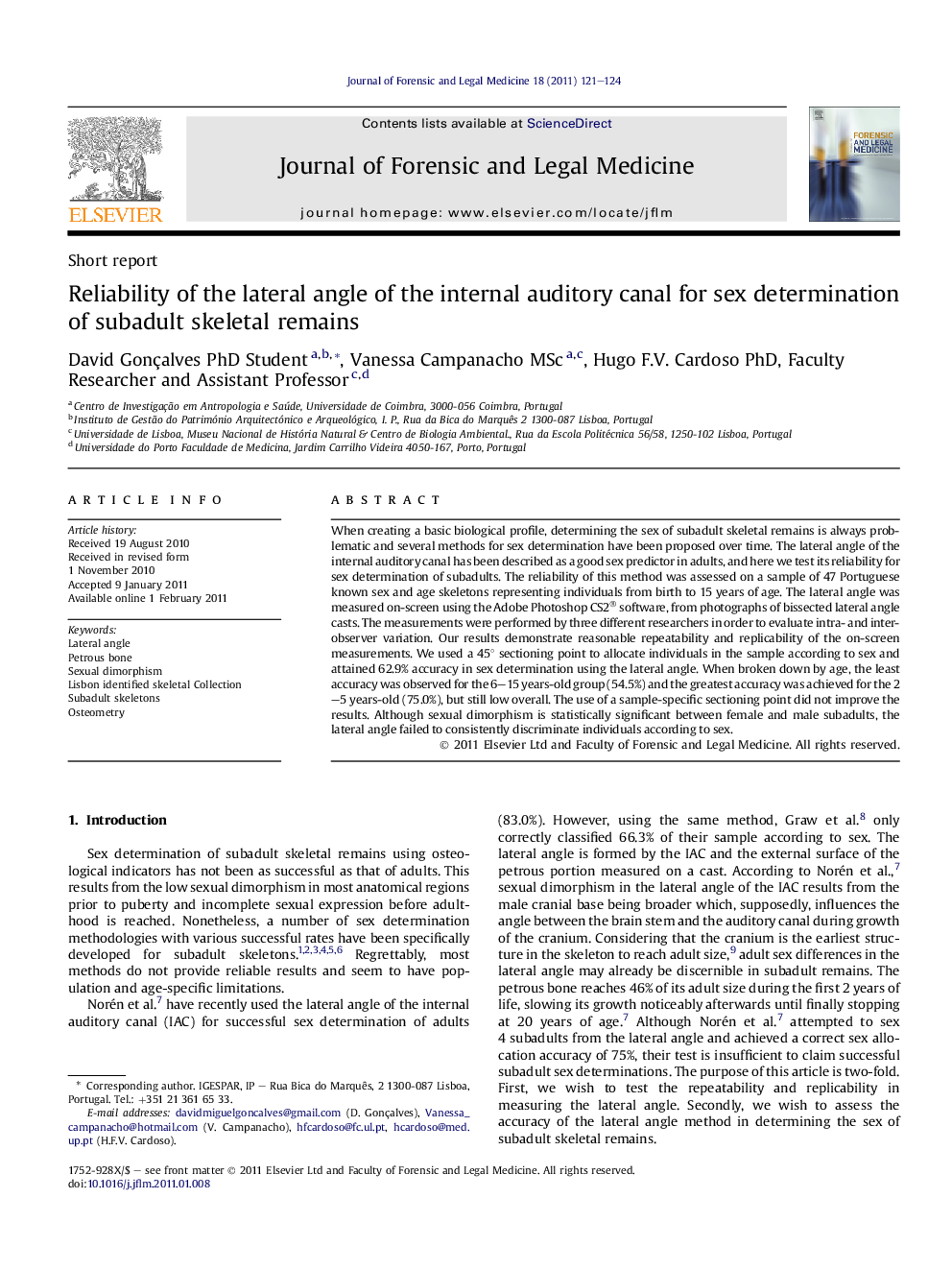| Article ID | Journal | Published Year | Pages | File Type |
|---|---|---|---|---|
| 102710 | Journal of Forensic and Legal Medicine | 2011 | 4 Pages |
When creating a basic biological profile, determining the sex of subadult skeletal remains is always problematic and several methods for sex determination have been proposed over time. The lateral angle of the internal auditory canal has been described as a good sex predictor in adults, and here we test its reliability for sex determination of subadults. The reliability of this method was assessed on a sample of 47 Portuguese known sex and age skeletons representing individuals from birth to 15 years of age. The lateral angle was measured on-screen using the Adobe Photoshop CS2® software, from photographs of bissected lateral angle casts. The measurements were performed by three different researchers in order to evaluate intra- and inter-observer variation. Our results demonstrate reasonable repeatability and replicability of the on-screen measurements. We used a 45° sectioning point to allocate individuals in the sample according to sex and attained 62.9% accuracy in sex determination using the lateral angle. When broken down by age, the least accuracy was observed for the 6–15 years-old group (54.5%) and the greatest accuracy was achieved for the 2–5 years-old (75.0%), but still low overall. The use of a sample-specific sectioning point did not improve the results. Although sexual dimorphism is statistically significant between female and male subadults, the lateral angle failed to consistently discriminate individuals according to sex.
